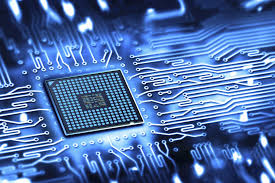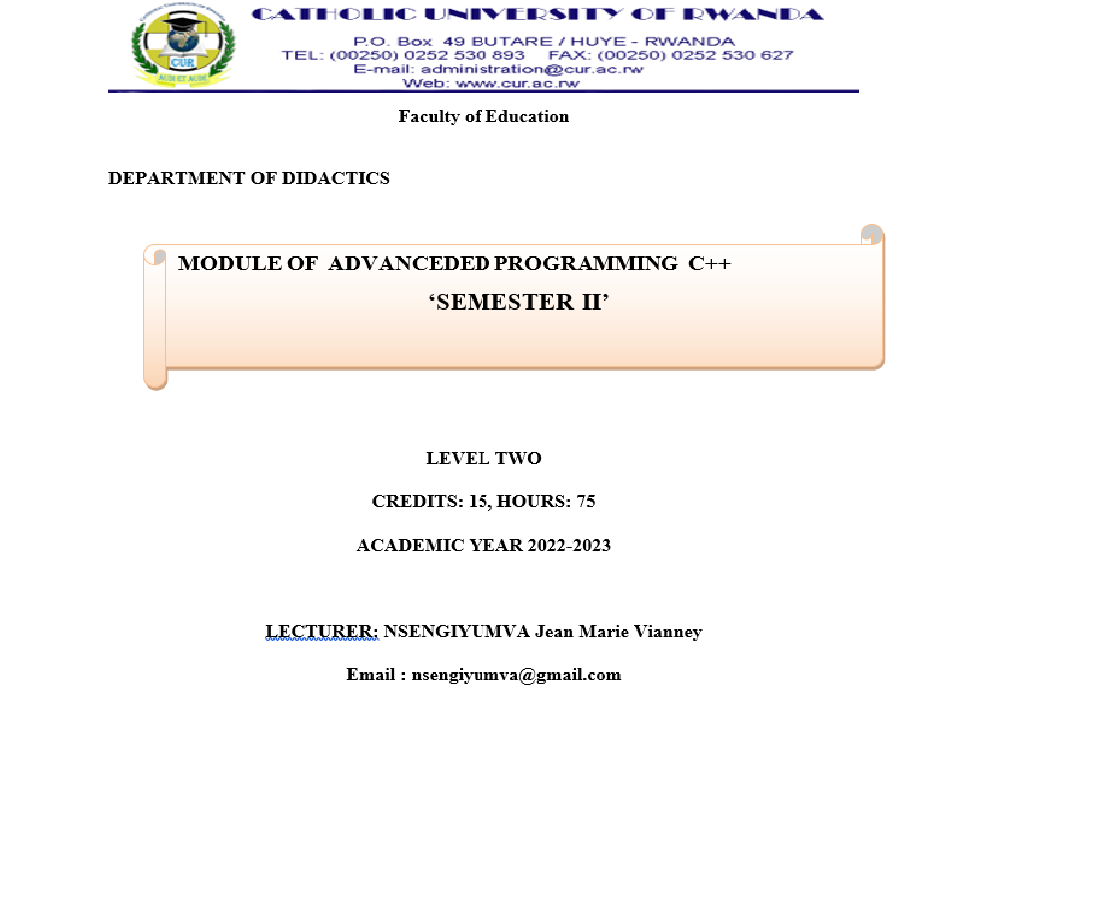
DATABASE MANAGEMENT AND INFORMATION SYSTEMS
DESCRIPTION OF AIMS
This module consists of two units #1.Database management system and #2. Information Management.
#1. The primary aim of the subject is to provide the students a deeper understanding of the relational database model by exposing the students to a variety of important issues of data base management, e.g., database design, physical storage, query optimization, database recovery, concurrency control, security and data integrity.
#2. This course will provide the students with an understanding of the principles of information systems technology and its impact on the strategic goals and direction of the organization. They will learn how MIS concepts are applied in business and how information systems can provide solutions to the entire organization.

parallel and distributed systems
DESCRIPTION OF AIMS
This course includes three sub modules that are, “#1. Parallel systems”“#2. Distributed systems” and “#3. Parallel and distributed Algorithms”
#1. Parallel Systems
Understanding and operating with parallel systems topics involving concepts, architectures and programming models.
#2. Distributed Systems
Understanding and operating with distributed systems topics involving concepts, architectures and programming models.
#3. Parallel and Distributed Algorithms
This course provides undergraduate students in computer science with experience of parallel and distributed computing. It gives an overview of parallel and distributed computers, and parallel computation. The course addresses architectures, languages, environments, communications, and parallel programming. Emphasis on understanding parallel and distributed computers and portable parallel programming with MPI.

Human-Computer Interaction
This module consists of three units “Foundations of human-computer interaction”, “Graphical user interface design” and “Ergonomics” combined into one course “Human-Computer Interaction”. This entire course presents a comprehensive introduction to the principles and techniques of human-computer interaction and designing the interactive interface.

Analog and Digital electronics
This module will help to obtain a knowledge and understanding of operation principle and application of
semiconductor devices. In addition, they will be able to distinguish different
electronic equipment (amplifier, signal generator oscilloscope, voltmeter
Ohmmeter and Ammeter), design and analyze simple analogue and digital
electronic circuits containing passive and active components as well as
integrated circuit components

SOFTWARE ENGINEERING AND PROJECT MANAGEMENT
LEARNING OUTCOMES
Having successfully completed the module, students should be able to
1. Apply guidelines for the design of application software and user interfaces.
2. Apply the principles of program design (involving the design and development of a range of objects) to the construction of a significant piece of software, justifying the design decisions made at each stage and addressing the relevant quality issues.
3. Identify the basic techniques that result in efficient and effective ways of building large software systems and be able to use those techniques in practice.
4. Apply the principles associated with the design and development to a range of web applications.
5. Outline the theories that underpin the design and development of human-computer interfaces.
6. Assess in a systematic fashion the quality of the interfaces in a range of software systems.
7. Discuss the properties of good software design.
8. Compare and contrast object-oriented analysis and design with structured analysis and design.
9. Evaluate the quality of multiple software designs based on key design principles and concepts.
10. Select and apply appropriate design patterns in the construction of a software application.

Data structure and Algorithms analysis
PRE-REQUISITE OR CO-REQUISITE MODULES/COMPONENTS:
- Computer Programming
LEARNING OUTCOMES
Brief description of aims and content
Module consists of C++ Programming Language
- Introduces the fundamental concepts programming from an object-oriented perspective. Through the study of object design, this course also introduces the basics of human computer interfaces, graphics, and the social implications of computing, along with significant coverage of software engineering
- Introduces the advanced programming concepts
8. Learning outcomes
Having successfully completed the module, students should be able to:
1. Design, implement, test, and debug simple programs in C++ programming language.
2. Describe how the class mechanism supports encapsulation and information hiding.
3. Design, implement, and test the implementation of “is-a” relationships among objects using a class hierarchy and inheritance.
4. Compare and contrast the notions of overloading and overriding methods in an object-oriented language.
5. GUI programming features.
6. Programming for network and database servers
7. Programming for security enabled transactions.
8. Robust programming concepts.
LEARNING AND TEACHING STRATEGIES
Lectures
Practical works
Group & Individual work
Assignments
Practical works

MODULE OF OBJECT ORIENTED PROGRAMMING USING JAVA
Overview
Java is a popular programming language used for developing applications and websites. It is an object-oriented language that is platform-independent, meaning it can run on any operating system. Java is used for developing web applications, mobile applications, desktop applications, and embedded systems. Major vendors for Java include Oracle, IBM, and Microsoft. Oracle provides the Java Development Kit (JDK) and Java Runtime Environment (JRE) for developing and running Java applications. IBM provides the IBM Java SDK and IBM WebSphere Application Server for developing and deploying Java applications. Microsoft provides the Microsoft Java Virtual Machine (MSJVM) for running Java applications.

RESEARCH MEDODOLOGY
Learning outcomes
By the end of the subject students should be able to:
· Demonstrate the ability to choose methods appropriate to research aims and objectives
· Understand the limitations of particular research methods
· Develop skills in qualitative and quantitative data analysis and presentation
· Develop advanced critical thinking skills
· Demonstrate enhanced writing skills
Generic skills
By the end of the subject students should be able to:
• Demonstrate the ability to choose methods appropriate
to research aims and objectives
• Understand the limitations of particular research methods
• Develop skills in qualitative and quantitative data analysis and presentation
• Develop advanced critical thinking skills
• Demonstrate enhanced writing skills

C ++
Learning outcomes
Having successfully completed the module, students should be able to:
1. Design, implement, test, and debug simple programs in C++ programming language.
2. Describe how the class mechanism supports encapsulation and information hiding.
3. Design, implement, and test the implementation of “is-a” relationships among objects using a class hierarchy and inheritance.
4. Compare and contrast the notions of overloading and overriding methods in an object-oriented language.
5. GUI programming features.
6. Programming for network and database servers
7. Programming for security enabled transactions.
8. Robust programming concepts.

NUMERICAL ANALYSIS AND LINEAR PROGRAMMING
At the end of this module, students should have a reasonable understanding of the basic concepts of the types of one variable equations (algebraic and transcendent); the Iterative numerical methods of resolution approached the linear equation systems and
differential equations and how to apply the mechanisms of integration, interpolation and extrapolation as well as the use of python programming language into the resolution of different equations. They will be able to translate the mathematics concepts into a programming concept to resolve various equation either using C++ or python.

Study skills and Computer Literacy
The purpose of this module is to equip students with the necessary skills for further study:
computer access, library induction, skills of essay- and examination-writing and oral presentation,
an understanding of the logic of argument, skills of note-taking, summarising and information
retrieval, the knowledge and attitude to cope with self-directed study and an understanding of
what is expected of the student and what may be expected of the university. As Learning Outcomes , at the end of this module , students should be able to:
1. Use sources selectively to extract relevant information.
2. evaluate the reliability of sources as information
3. organize information to answer a question or an examination
4. plan and write an essay
5. work effectively in groups and individually
6. show familiarity with the use the computer (Microsoft Windows, Word and
Excel)
7. make effective oral presentation by using Microsoft PowerPoint
8. make effective use of the University Library

Networking
The aim of this module is to introduce the key of computer networks, design & administration of
integrated communication networks using CISCO Devices and network management. A the end of this module, the students should be able to:
1. Discuss important network standards in their historical context.
2. Describe the responsibilities of the layers of the ISO reference model.
3. Discuss the differences between circuit switching and packet switching along with the
advantages and disadvantages of each.
4. Explain how a network can detect and correct transmission errors.
5. Illustrate how a packet is routed over the Internet.
6. Install a simple network with two clients and a single server using standard host
configuration software tools such as DHCP.
COMPUTER SCIENCE CUR 56
7. Discuss the fundamental ideas of network security
8. Summarize common authentication protocols.
9. Gain knowledge in Network management basics, Network standards, Internet management,
SNMP, Designing and Administrating networks
10. Understand the basic principles that underpin network management associated with
integrated communications networks.

Operating system and Computer Architecture
This module consists of three components: Introduction to operating system, Unix and shell programming and Computer Architecture.
1. The unit introduces the fundamentals of operating systems together with the basics of networking and communications.
2. The aim of this unit is to make the student familiar with the Unix operating system and the shell programming in Unix. It also gives an idea about how one can send communicate with others using Unix and change the setup of Unix operating system.
3. This course introduces the basic concepts of computer architectures. It starts with the structure of subsystems and covers the organization of the overall system. The unit outlines the fundamental way in which a computer works: starting with simple logic and progressing to a simple model of a microprocessor. This is followed by an appreciation of low-level programming leading to a clear understanding of the key points of machine performance.
Learning Outcomes
Having successfully completed the module, students should be able to
- Summarize the principles underlying the design and construction of a typical operating system, giving particular recognition to the wider applicability of the ideas and the influences from such developments as high-level languages, networking, multimedia, and security concerns.
- Use the facilities of the operating system to achieve a range of simple tasks, including enhancing the functionality by integrating new software components.
- Identify the security issues associated with distributed web applications and be able to suggest mechanisms leading to a resolution of these problems.
- Explain the concepts of UNIX shell commands.
- Write UNIX shell scripts for small applications.
- Explain the assembly codes used to instruct the processor.
- Explain the principles underlying the design and development of computer systems for a variety of purposes.
- Trace the influences of important computing developments (such as compiler technology, networking, the web, multimedia, safety, security) on the architecture of computer systems.
- Outline the architectural features of a modern computer system.
OPERATING SYSTEMS &COMPUTER ARCHITECTURE
The module consists of three components: Introduction to operating system, Unix and shell programming and Computer Architecture.
1. The unit introduces the fundamentals of operating systems together with the basics of networking and communications.
2. The aim of this unit is to make the student familiar with the Unix operating system and the shell programming in Unix. It also gives an idea about how one can send communicate with others using Unix and change the setup of Unix operating system.
3. This course introduces the basic concepts of computer architectures. It starts with the structure of subsystems and covers the organization of the overall system. The unit outlines the fundamental way in which a computer works: starting with simple logic and progressing to a simple model of a microprocessor. This is followed by an appreciation of low-level programming leading to a clear understanding of the key points of machine performance
food and water microbiology
The module aim to understand the basic knowledge on the diagnosis of food spoloige and food poisoning and even detection of water contamination.